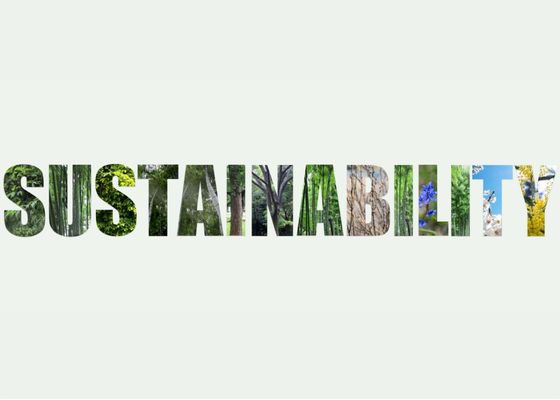Sustainable Fashion – An Emerging Trend
Sustainable Fashion – An Emerging Trend
What catches your attention initially when you browse for clothing? Frequently, it’s the outfit’s total appearance, including the colour, cut, design, and all other aesthetic elements. The fabric often takes a backseat by concentrating on them. However, as the material is the foundation of an outfit, it should be given priority. This viewpoint is crucial when the topic of sustainable fabrics is brought up. Natural fibres and textiles must be used, especially since the fashion business is one of the major pollutants of the environment. The most considerable portion of human waste that pollutes the atmosphere comes from the fashion sector.
Which is sustainable fashion?
Simply put, sustainable clothing is clothing that is created to prevent further waste production, reduce resource use, and have a positive environmental impact. Some of the ecological harm the current fashion industry has done must be reversed.
By designing and promoting clothing made from organic and environmentally friendly fibres, sustainability in fashion can be accomplished. Natural fibres have been manufactured responsibly, are chemical-free, recyclable, and grown without pesticides.
“Fashion that is environmentally beneficial in its design, production, distribution, and use is called sustainable fashion.”
Clothing produced in ways that prioritise social welfare and worker rights is considered ethical fashion, a word that is also common in conscious consumption. (Note: For vegans, ethical fashion may also apply to avoid wearing clothing made of fur, leather, or other animal products.) However, ethical and sustainable fashion is closely related because ecology goes hand in hand with socially just behaviours.
Sustainable Fabrics:
Over virgin, petroleum-derived synthetics like polyester, acrylic, and nylon, natural materials like hemp, linen, cotton, silk, wool, leather, and cellulose fibres—synthetic fibres created from plant sources—are generally preferred
This is because, unlike synthetic fibres, which will not biodegrade and instead sit in landfills, continuously releasing dangerous chemicals and gases, natural fibres are biodegradable and can compost neatly back into the soil (provided there are no harmful chemical residues left in the fabric). However, some natural materials are more environmentally friendly than others, with hemp, linen, and organic cotton typically ranking among the best. Even some plant fibres and wools can be regenerated, regenerating healthy soils and sequestering carbon (which helps combat climate change).
While cellulose fibres originate from plants, many are produced in ways that result in hazardous chemical byproducts during the production process. Some are also removed by destructive harvesting methods that worsen deforestation.
What is India doing to achieve sustainable fashion?
India is a spiritual nation with diverse cultures, geographies, and faiths. Since one of the Jain philosophies emphasises paragraph, which means “do not stockpile, and buy as per the necessity,” Indians have been engaging in a variety of recycling-related activities for a very long time. Recyclable materials are a common theme in ancient arts and crafts. In India, recycling textiles was a domestic craft that was practised in both industrial and domestic settings.
Aside from numerous domestic tasks, recycling-based crafts may have developed as a means of creative expression or reliable and affordable raw material substitution. These recycling-based crafts are done mainly by women. Many of these crafts have developed into livelihoods and sources of revenue throughout time. One of the oldest textile recycling processes in the craft industry is frequently cited as the Bengali Kantha work. This technique makes excellent use of vintage muslin sarees as the foundation for stunning running stitch hand embroidery.
The Bakkarwal and Gujjar nomadic tribes, who live in Jammu and Kashmir and Rajasthan, respectively, use a variety of textile crafts based on recycling as a part of their heritage and culture and to conserve the ancient textiles. Old woollen felt blankets are transformed into handcrafted carpets by Jammu and Kashmiri tribes employing needlework embroidery and acrylic yarns.
Like patchwork, embroidery, and mirror work, Rajasthani tribes also use these techniques to accentuate the beauty of their textiles. Numerous accessories manufactured from recycled materials include hats, bags, wall hangings, mojaris (traditional footwear), cushions, etc. Chindi Durries are made by weaving durries on pit looms in the rural parts of Haryana. Old sarees, shawls, dupattas, and other outdated textiles are the source material for rough weaving.
Influencers promoting ethical clothing
These bloggers support ethical and environmentally sustainable fashion, and we must draw inspiration from their feeds. Here, we’re going to discuss sustainable fashion bloggers who support ethical and conscious fashion, motivate us to choose more conscious clothing, and excel in persuading their viewers to shop ethically rather than generally engaging in fast fashion consumption.
- The Cut, Elle, Refinery29, and Huffington Post are just a few of the publications Celine Semaan writes for. She is a sustainable fashion blogger. She also founded Slow Factory, a company that collaborates with businesses to research and implement sustainability-related activities.
- Lauren Singer: Lauren Singer is an ethical and wellness influencer who advocates a zero-waste lifestyle and sustainable fashion while she lives “in alignment with your values.” If you appreciate vintage style, check her out because she has a lot of it on her feed.
- Clare Press is a sustainable fashion influencer who hosts the infamous fashion podcast “The Wardrobe Crisis” and invites guests to discuss culture, sustainability, ethics, activism, etc. She is the first sustainability editor for Vogue.
- Aja Barbar is a sustainable fashion blogger and consultant who informs her audience about ethical shopping, intersectional feminism, and how power structures influence our purchasing decisions. Check her stream if you’re interested in making moral decisions that are more profound and successful.
- Estelle is a Paris-based sustainable fashion influencer who gives conscientious apparel a romantic feel. She discusses eco-friendly clothing companies and urges a similar way of living. She pledges, “I adore the notion of’ responsible dressing’: fundamentals we always like wearing.”
- Leah is an Australian influencer sustainably, and everything on her page is laid-back, understated, and moral. She serves as an inspiration for many aspiring young designers.

